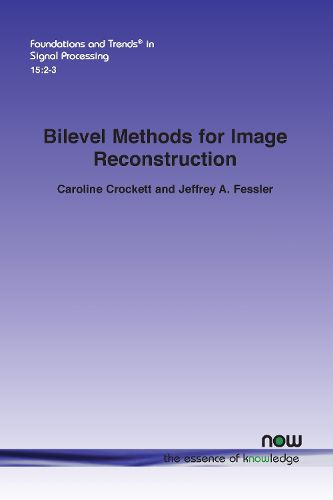Readings Newsletter
Become a Readings Member to make your shopping experience even easier.
Sign in or sign up for free!
You’re not far away from qualifying for FREE standard shipping within Australia
You’ve qualified for FREE standard shipping within Australia
The cart is loading…






This title is printed to order. This book may have been self-published. If so, we cannot guarantee the quality of the content. In the main most books will have gone through the editing process however some may not. We therefore suggest that you be aware of this before ordering this book. If in doubt check either the author or publisher’s details as we are unable to accept any returns unless they are faulty. Please contact us if you have any questions.
Methods for image recovery and reconstruction aim to estimate a good-quality image from noisy, incomplete, or indirect measurements. Such methods are also known as computational imaging. New methods for image reconstruction attempt to lower complexity, decrease data requirements, or improve image quality for a given input data quality.Image reconstruction typically involves optimizing a cost function to recover a vector of unknown variables that agrees with collected measurements and prior assumptions. State-of-the-art image reconstruction methods learn these prior assumptions from training data using various machine learning techniques, such as bilevel methods. This review discusses methods for learning parameters for image reconstruction problems using bilevel formulations, and it lies at the intersection of a specific machine learning method, bilevel, and a specific application, filter learning for image reconstruction.The review discusses multiple perspectives to motivate the use of bilevel methods and to make them more easily accessible to different audiences. Various ways to optimize the bilevel problem are covered, providing pros and cons of the variety of proposed approaches. Finally, an overview of bilevel applications in image reconstruction is provided.
$9.00 standard shipping within Australia
FREE standard shipping within Australia for orders over $100.00
Express & International shipping calculated at checkout
This title is printed to order. This book may have been self-published. If so, we cannot guarantee the quality of the content. In the main most books will have gone through the editing process however some may not. We therefore suggest that you be aware of this before ordering this book. If in doubt check either the author or publisher’s details as we are unable to accept any returns unless they are faulty. Please contact us if you have any questions.
Methods for image recovery and reconstruction aim to estimate a good-quality image from noisy, incomplete, or indirect measurements. Such methods are also known as computational imaging. New methods for image reconstruction attempt to lower complexity, decrease data requirements, or improve image quality for a given input data quality.Image reconstruction typically involves optimizing a cost function to recover a vector of unknown variables that agrees with collected measurements and prior assumptions. State-of-the-art image reconstruction methods learn these prior assumptions from training data using various machine learning techniques, such as bilevel methods. This review discusses methods for learning parameters for image reconstruction problems using bilevel formulations, and it lies at the intersection of a specific machine learning method, bilevel, and a specific application, filter learning for image reconstruction.The review discusses multiple perspectives to motivate the use of bilevel methods and to make them more easily accessible to different audiences. Various ways to optimize the bilevel problem are covered, providing pros and cons of the variety of proposed approaches. Finally, an overview of bilevel applications in image reconstruction is provided.